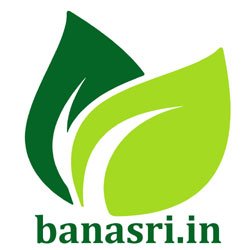
Festivals of Nagaland
Nagaland, known as the “Land of Festivals,” boasts a rich cultural heritage and vibrant traditions. The festivals celebrated in Nagaland are a reflection of the diverse customs, beliefs, and lifestyles of its numerous indigenous tribes. These festivals are a significant part of Naga society, promoting unity and cultural pride. Here is a detailed exploration of some of the most prominent festivals of Nagaland.
Hornbill Festival
Time of Festival
- December 1st to 10th
Specialty of the Festival
- Significance: Showcasing the rich cultural heritage of Nagaland.
- Activities: Traditional dances, music, sports, crafts exhibitions, and food fairs.
Locality of the Festival
- Celebrated by: All tribes of Nagaland
- Major Locations: Kisama Heritage Village, near Kohima
Nature of the Festival
- Type: Cultural and social
- Description: Known as the “Festival of Festivals,” Hornbill Festival brings together all the tribes of Nagaland to showcase their unique cultural heritage. The festival features traditional dances, music, and sports competitions like wrestling and archery. Crafts exhibitions, food fairs, and a rock music contest are also major highlights. The festival aims to preserve and promote Naga culture, attracting tourists from around the world.
Moatsu Mong
Time of Festival
- May
Specialty of the Festival
- Significance: Celebrating the completion of sowing.
- Activities: Traditional dances, songs, and community feasts.
Locality of the Festival
- Celebrated by: Ao tribe
- Major Locations: Mokokchung district
Nature of the Festival
- Type: Agricultural and cultural
- Description: Moatsu Mong marks the completion of the sowing season. The Ao tribe celebrates with traditional dances, songs, and community feasts. Villagers gather to relax and enjoy after the strenuous agricultural activities. The festival also includes rituals to seek blessings for a good harvest.
Sekrenyi Festival
Time of Festival
- February
Specialty of the Festival
- Significance: Purification and renewal.
- Activities: Rituals, traditional games, dances, and feasting.
Locality of the Festival
- Celebrated by: Angami tribe
- Major Locations: Kohima and surrounding areas
Nature of the Festival
- Type: Religious and cultural
- Description: Sekrenyi, also known as Phousanyi, is a 10-day festival involving purification rituals and ceremonies. The highlight is the Thekra Hie, a day of singing and feasting. Traditional games and dances are performed, and people wear traditional attire. The festival symbolizes purification, renewal, and the strengthening of social bonds.
Tuluni Festival
Time of Festival
- July
Specialty of the Festival
- Significance: Celebrating the harvest and abundance.
- Activities: Traditional dances, songs, and feasting.
Locality of the Festival
- Celebrated by: Sumi tribe
- Major Locations: Zunheboto district
Nature of the Festival
- Type: Agricultural and cultural
- Description: Tuluni is a harvest festival celebrating the abundance of crops. The Sumi tribe celebrates with traditional dances, songs, and feasting. Rice beer, locally known as Tuluni, is an essential part of the festivities. The festival fosters a sense of gratitude and communal harmony.
Metemneo Festival
Time of Festival
- August
Specialty of the Festival
- Significance: Celebrating the harvest of millet.
- Activities: Traditional dances, songs, and rituals.
Locality of the Festival
- Celebrated by: Yimchunger tribe
- Major Locations: Tuensang district
Nature of the Festival
- Type: Agricultural and cultural
- Description: Metemneo is a five-day festival marking the harvest of millet. The Yimchunger tribe performs traditional dances, songs, and rituals to thank the deities for the bountiful harvest. The festival is also a time for reconciliation and renewal of social bonds, with community feasts and celebrations.
Tsukhenyie Festival
Time of Festival
- April
Specialty of the Festival
- Significance: New year celebration and purification.
- Activities: Rituals, traditional dances, and feasting.
Locality of the Festival
- Celebrated by: Chakhesang tribe
- Major Locations: Phek district
Nature of the Festival
- Type: Cultural and religious
- Description: Tsukhenyie marks the beginning of the new year and involves purification rituals. The Chakhesang tribe performs traditional dances, songs, and community feasts. Rituals are conducted to ward off evil spirits and seek blessings for prosperity and good health. The festival is a time for joy, renewal, and communal harmony.
Miu Festival
Time of Festival
- January
Specialty of the Festival
- Significance: Celebrating the new year and purification.
- Activities: Traditional dances, songs, and rituals.
Locality of the Festival
- Celebrated by: Konyak tribe
- Major Locations: Mon district
Nature of the Festival
- Type: Cultural and religious
- Description: Miu is a new year festival celebrated by the Konyak tribe. The festival involves rituals to purify the land and community, traditional dances, and songs. It is a time for the community to come together, celebrate the new year, and seek blessings for prosperity and well-being.
The festivals of Nagaland are a vibrant expression of its rich cultural heritage and the strong sense of community among its people. Each festival, with its unique significance and celebrations, offers a glimpse into the traditions and collective spirit of the various tribes of Nagaland.
